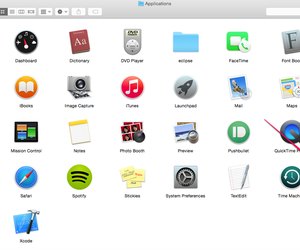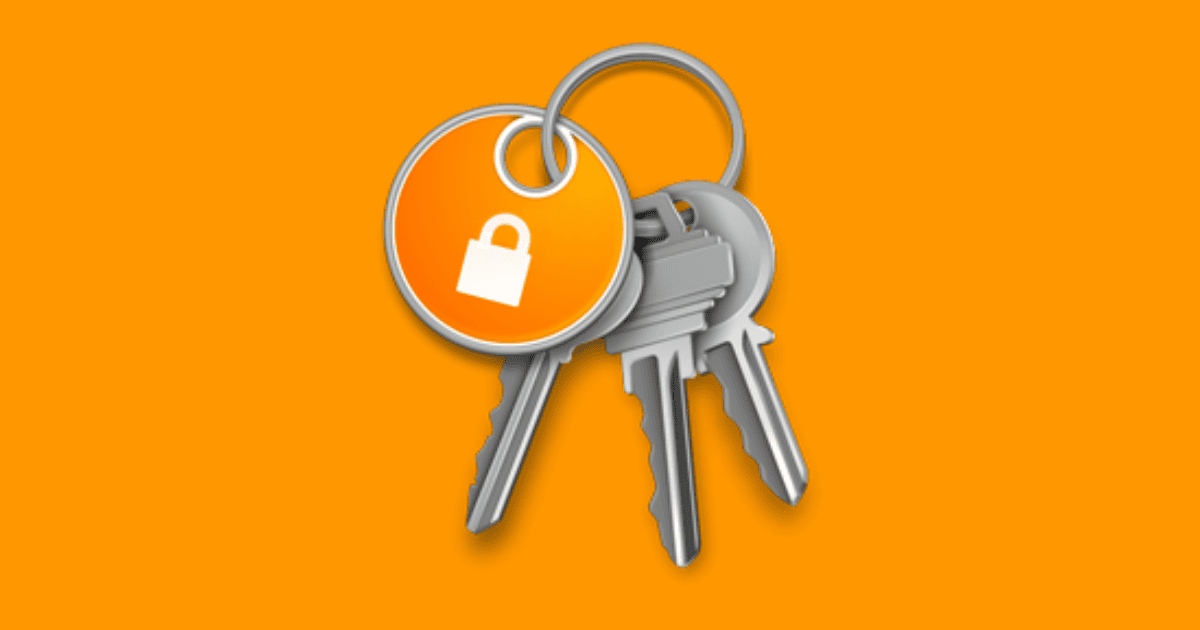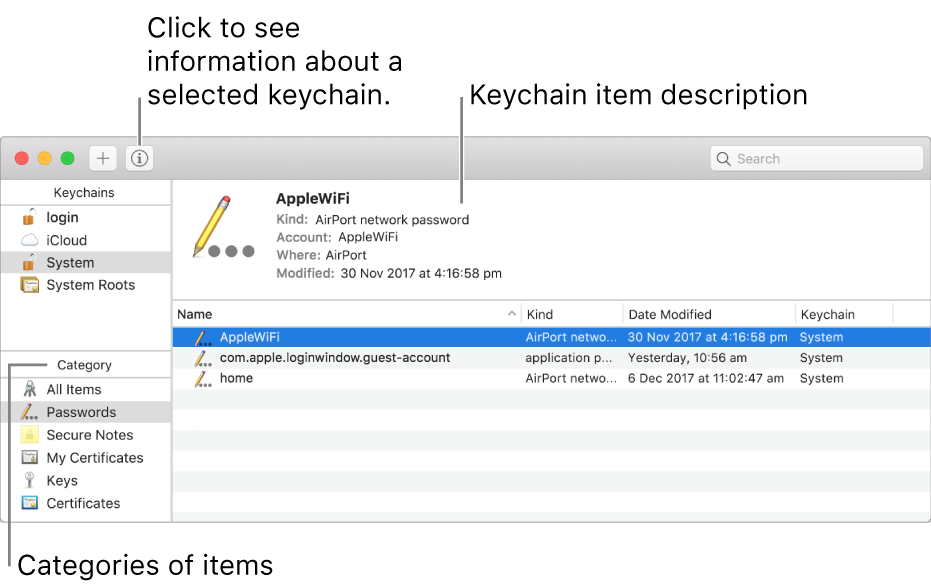

- #Mac keychain access local items mac os
- #Mac keychain access local items manual
- #Mac keychain access local items password
- #Mac keychain access local items plus
- #Mac keychain access local items mac
After making the switch, reset your login keychain if you don’t like keeping passwords in multiple locations.
#Mac keychain access local items password
You’ve Switched to a Different Password Managerĭespite the convenience of having Keychain integrated into your Mac, you may prefer an alternative cross-platform password management utility such as 1Password, LastPass, or Dashlane. A complete keychain reset is the only way to start saving passwords again.
#Mac keychain access local items mac
So if you forget and reset your Mac account with a new password, you won’t be able to access or use your current login keychain unless you remember your old password. I suggest wrapping this in a shell function, e.g.You’ve Forgotten the Password to the Login Keychainīy default, your login keychain uses your Mac’s admin password to encrypt its contents. This will only output something, if we matched the password line, so we can treat no output as if there either was no password stored, or security was not allowed to read it. We can pipe the result through a small ruby script to extract the password: security 2>&1 >/dev/null find-generic-password -ga test \ So we end up with: security 2>&1 >/dev/null find-generic-password -ga testĪnd the result from that is: password: "the4seasons" The ordering here matters, since stderr is redirected to a duplicate of stdout, it is important that we do this redirection before we redirect stdout to /dev/null. We redirect stderr to stdout (which is done using 2>&1, meaning redirect file descriptor 2 (stderr) to a duplicate of 1 (stdout)). This however means, that we can quickly silence all but the last line by redirecting stdout to /dev/null. The output looks something like: keychain: "/Users/duff/Library/Keychains/login.keychain" The output from security is however not useable as-is. Locate the item and click the I button below the list (or double click) to alter the settings of the item. You can later edit which applications are allowed to access the item from Keychain Access. You can either deny, allow once, or always allow.

When you run this command, you will be asked if security should be granted access to the keychain item we created.

To also get the password, we would have to add the -g option: security find-generic-password -ga test This dumps the record for the test account, everything except the actual password. For a generic password, the Keychain Item Name is a textual description of the password (also labeled Where and referred to as the service.) The Account Name is the name we will use to retrieve the password (we can also retrieve by service, or both,) and the Password should be self-explanatory.Īfter having created a password, let’s say we set the Account Name to test, we can run the following from the shell (Terminal): security find-generic-password -a test Keychain will ask you for Keychain Item Name, Account Name, and Password.
#Mac keychain access local items plus
You can create a new password by launching Keychain Access (located in the Utilities folder) and click the plus button below the right list (showing all your existing keychain items.) with no predetermined purpose) or internet passwords (those which go together with an internet scheme/protocol such as https, sftp, smtp, or similar.) Generally we are interested in either generic passwords (i.e. The keychain can store different kinds of entries. But let me save you some time and give you the gist of it.
#Mac keychain access local items manual
The command to access the keychain is security and it has a manual page.
#Mac keychain access local items mac os
Mac OS has a keychain which is intended for storing and retrieving passwords in a secure fashion, and this service can fortunately be accessed from shell, so that is what I use for my passwords. For example I have GeekTool show information extracted from a database, I create new sneakemail addresses from Quicksilver by letting a script simulate the browser session, and I have the TextMate makefile sign updates with a passphrase protected private key. I have a few scripts which need a password to complete their task. Next post: Working With Numbers Keychain Access From Shell Previous post: Lighttpd, ProFont, Remind, Ruby, and Scopes.


 0 kommentar(er)
0 kommentar(er)
